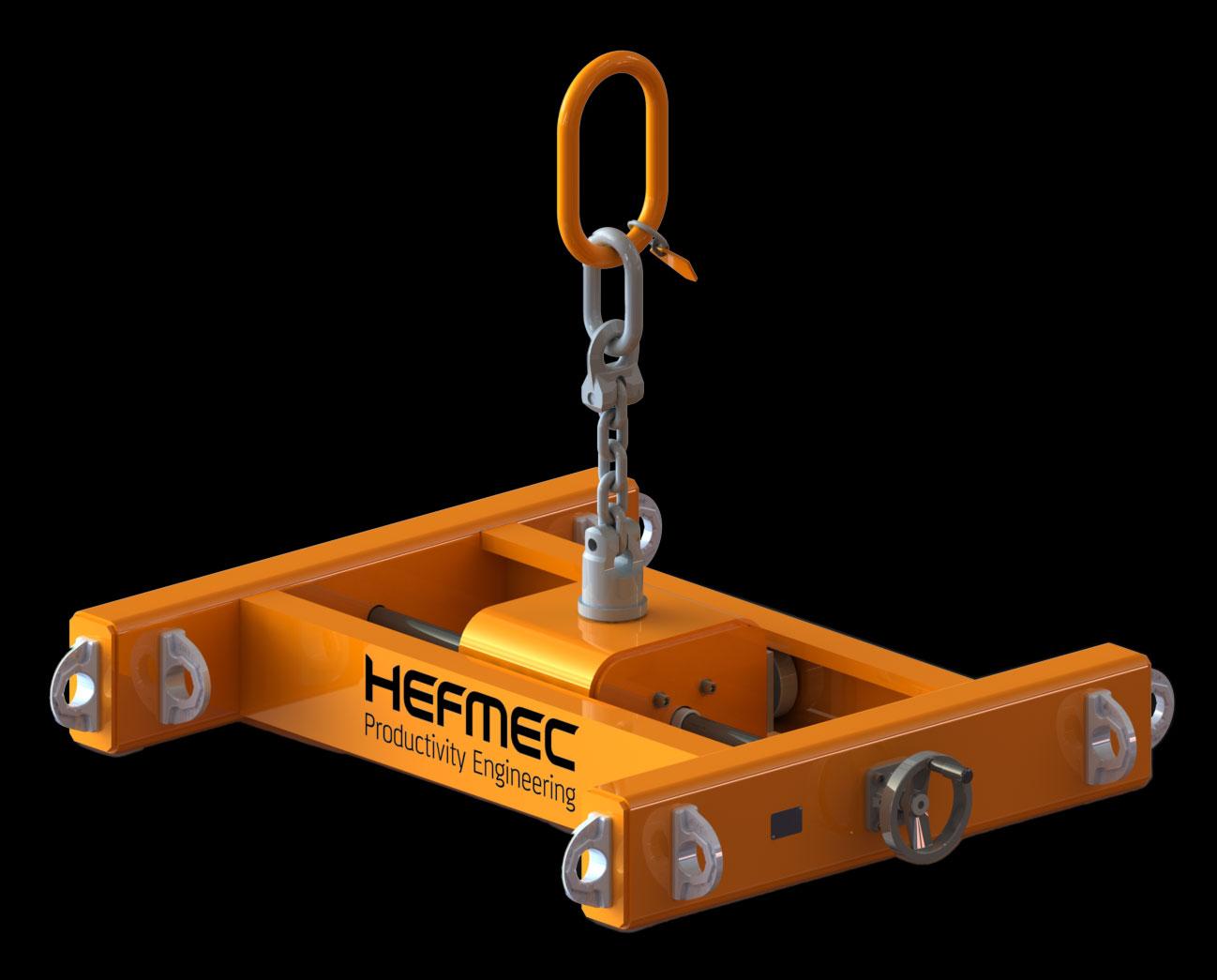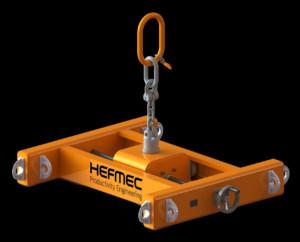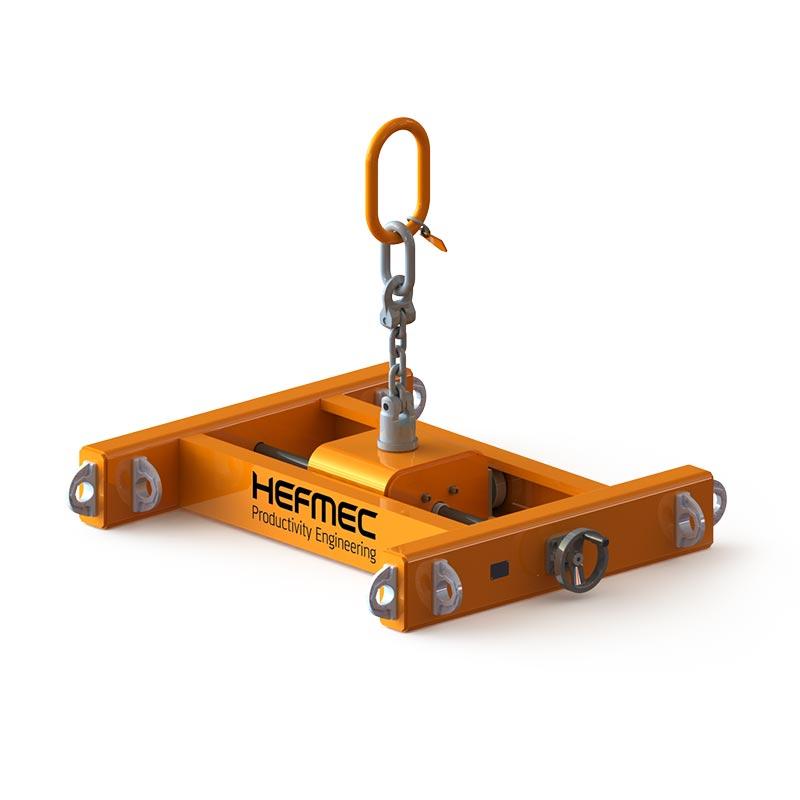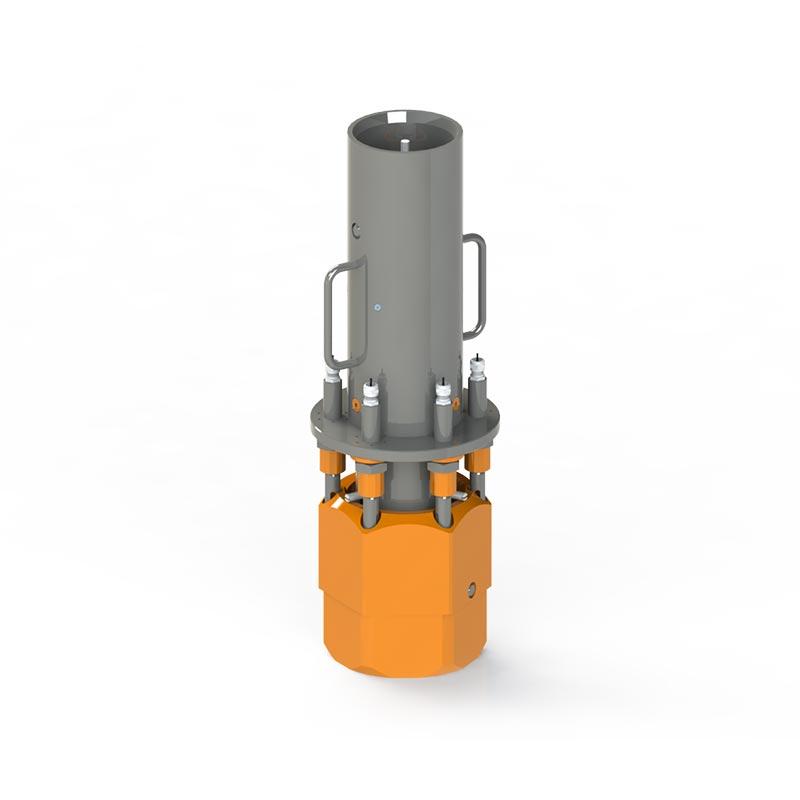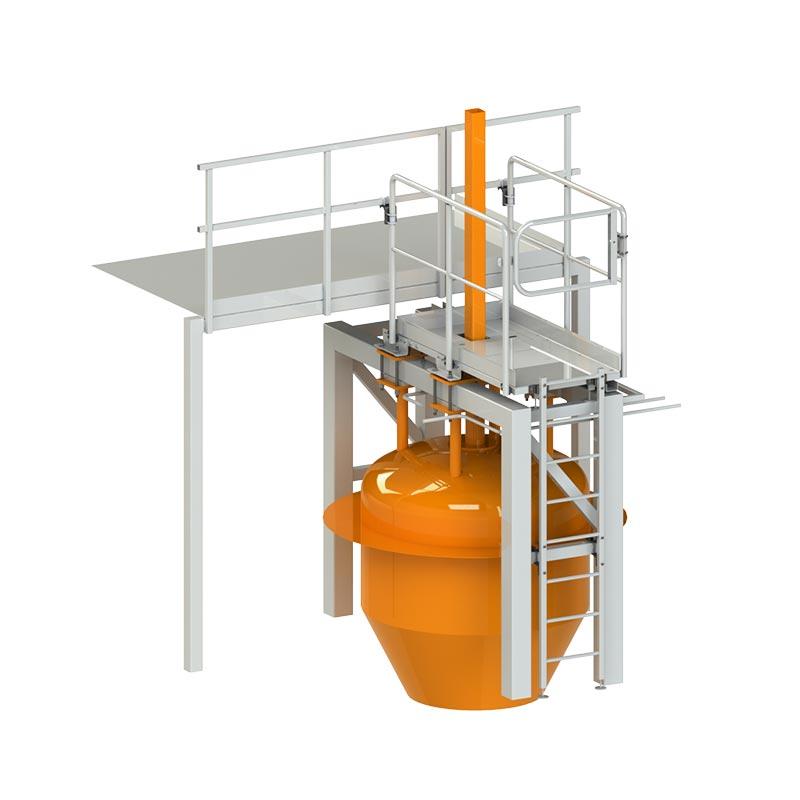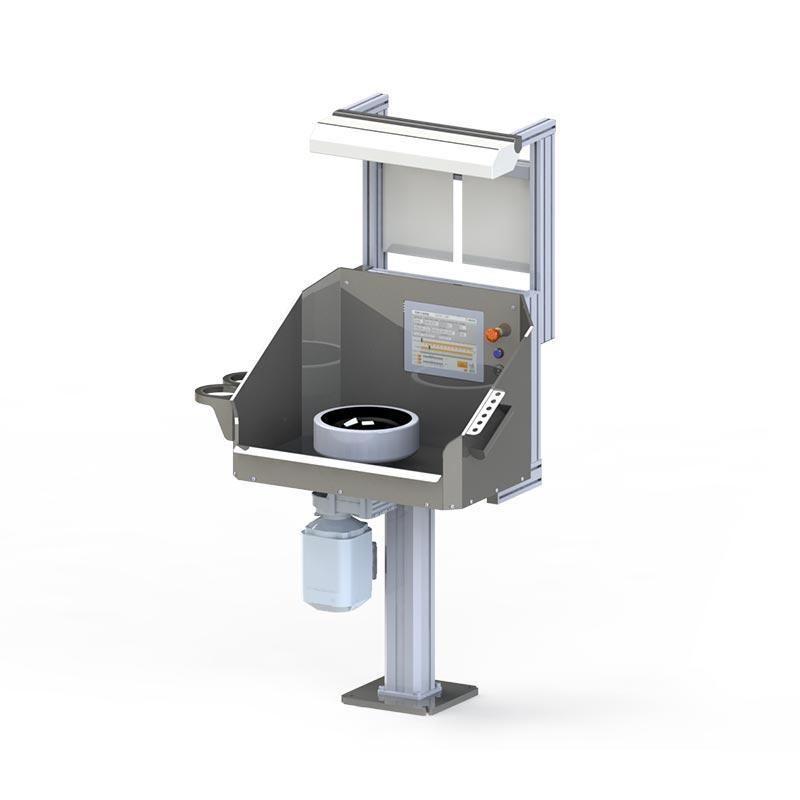Handling off-centre loads on a production line requires a carefully designed lifting beam that compensates for the challenges posed by the position of the centre of gravity. The right lifting beam ensures safe and efficient load handling when the centre of gravity is not in the middle of the load. The choice must take into account the torque effects of the load, the load carrying capacity requirements and the specific characteristics of the production line.
Lifting beam for off-centre loads: what to consider?
Lifting solutions for production lines often face challenges when the centre of gravity of the pieces being handled is not centrally located. This situation is particularly common in mechanical engineering, precast and metalworking production lines where asymmetrical pieces or assemblies are lifted.
Non-centric loads pose particular safety risks and efficiency challenges in lifting operations. A conventional lifting beam may not be suitable for these situations, as uneven load distribution can lead to tilting, swaying or, in the worst case, falling of the load. This calls for customised lifting beam solutions specifically designed to safely handle off-centre loads.
A correctly selected and sized lifting beam will significantly improve the efficiency of the production line. It enables fast and safe lifting, reduces handling times and minimises the risk of damage. Tailor-made solutions, such as adjustable lifting points or balancing systems, ensure that each lift is carried out in a controlled manner, regardless of the load shape or centre of gravity position.
What is an off-centre load and how does it affect the choice of lifting beam?
An off-centre load is a lifting object whose centre of gravity is not located at the geometric centre. Such loads occur when the object is asymmetrical in shape, contains materials of different densities or has attachments on only one side.
The location of the centre of gravity is a crucial factor in the choice of the lifting beam. When the centre of gravity moves away from the centre, a torque effect is created which tends to tilt the load. This requires special design of the lifting beam: the position of the lifting points must be optimised to compensate for the uneven load distribution. Incorrect sizing can lead to dangerous situations and production disruptions.
Analysing the load distribution is a critical step in the selection of a lifting beam. The analysis determines the exact position of the centre of gravity, calculates the moments and forces generated and evaluates the dynamics of the lifting situation. A professional load analysis will reveal all relevant factors that influence the design and dimensioning of the lifting beam.
Typical non-central loads in industry include:
- Parts of machines with heavy components on one side only
- Long profiles or beams with uneven mass distribution
- Assemblies with asymmetrically mounted accessories
- Castings with varying material density
- Tanks and containers with unevenly distributed contents
How is the load capacity of a lifting beam calculated for non-central loads?
The load capacity calculations for non-central loads take into account both vertical forces and moment effects. The calculation starts by determining the total weight of the load and the exact position of the centre of gravity, and then calculates the forces at each lifting point separately.
The determination of safety factors is particularly important in the case of non-central loads. Standard safety factors often need to be increased, as non-centrality increases the variability and unpredictability of the load. Typically, a factor of safety of at least 1.5 times that of a normal symmetrical load is used, but the exact value depends on the criticality of the application and the degree of load noncentrality.
Taking account of momentum effects requires specific expertise. A lifting beam is subjected to bending moments that can be significantly higher than for a symmetrical load. In addition, the effect of torsional moments must be analysed, especially if the load can rotate during lifting. These factors directly influence the choice of the lifting beam profile and material strengths.
A correctly dimensioned lifting beam can withstand the designed load throughout its service life. Professional design ensures that all critical factors are taken into account and that the lifting beam operates safely under all operating conditions. The lifetime guarantee is a sign that the highest quality standards have been applied in design and manufacture.
What special solutions does Hefmec offer for handling off-centre loads?
Tailor-made lifting beam solutions provide an effective answer to the challenges of off-centre loads. The OptiBeam range of adjustable lifting beams allows for quick tool-less movement of lifting points, which is particularly valuable when handling variable loads on the same production line. An integrated measuring scale makes it easy to make the right adjustment and ensures repeatability.
Balancing systems play a key role in handling particularly challenging off-centre loads. These systems can include automatically adjustable lifting points that compensate for centre of gravity shifts in real time. The OptiBeam HEAVY range is specifically designed to handle heavy off-centre loads of over 5 tonnes, offering a reinforced profile and a wide range of adjustment options.
Intelligent control systems add value to demanding lifting situations. They can include:
- Load monitoring systems that detect uneven loads
- Automatic balancing functions
- Real-time collection and analysis of lifting data
- Safety alerts under abnormal load conditions
Fast delivery times and agile working methods enable efficient project delivery. While other suppliers talk about months, customised solutions can be delivered in days. This is possible thanks to an efficient design process and off-the-shelf modular solutions that can be quickly adapted to the customer’s needs.
The design of customised solutions always starts by identifying the specific requirements of the production line. FixedBeam lifting beams are suitable for situations where non-centric loads are repeatedly similar, offering an optimised solution for a specific lifting task. Fixed lifting points can be positioned at exactly the right points, maximising efficiency and safety.
Summary: how to make sure you choose the right lifting beam
Choosing the right lifting beam for off-centre loads is based on careful analysis and design. The main selection criteria form a whole, with each factor influencing the final result.
The load analysis is always the starting point. It includes determining the centre of gravity, analysing the mass and shape of the load and assessing the dynamics of the lifting situation. Safety requirements specify minimum requirements for load capacity and safety factors, but it is often prudent to exceed these requirements to ensure operational safety.
The layout of the production line sets the boundary conditions for the sizing of the lifting beam. The available lifting height, the need for lateral movements and compatibility with existing lifting systems must be taken into account. Future needs should be anticipated at the design stage so that the lifting beam can serve effectively even as production changes.
A holistic approach ensures the best results. It starts with understanding the root cause of the problem: why off-centre loads are being addressed, what challenges the current solution poses and what the production development goals are. From this, a technically and economically optimal solution can be designed that not only solves the current problem but also supports the development of production.
The importance of expert advice cannot be overstated. A skilled designer will identify critical factors that an inexperienced one might overlook. Working together will ensure that the lifting beam meets all requirements and performs reliably for decades to come. When properly selected and sized, a lifting beam will pay for itself in improved productivity and reduced production disruptions.

